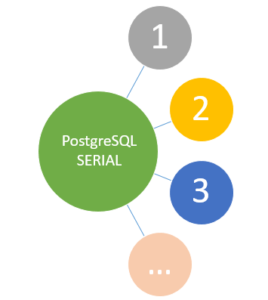Serial Postgresql Type
(1 reply) How Can I restart the values of a serial type field.?? I mean, I have a table with id_user defined as serial type, if a delete the data from this table.


For a relational database like PostgreSQL, it could widely be considered a sin among developers not to include a primary key in every table. Descargar Manual Para Aprender Html. It is therefore crucial that you do your utmost to add that all-important primary key column to every table, and thankfully Postgres provides two methods for accomplishing this task. Using the Serial Data Type By far the simplest and most common technique for adding a primary key in Postgres is by using the SERIAL or BIGSERIAL data types when CREATING a new table. As indicated in the, SERIAL is not a true data type, but is simply shorthand notation that tells Postgres to create a auto incremented, unique identifier for the specified column. Below we’ll create our simple books table with an appropriate SERIAL data type for the primary key.
CREATE TABLE books ( id SERIAL PRIMARY KEY, title VARCHAR ( 100 ) NOT NULL, primary_author VARCHAR ( 100 ) NULL ); By simply setting our id column as SERIAL with PRIMARY KEY attached, Postgres will handle all the complicated behind-the-scenes work and automatically increment our id column with a unique, primary key value for every INSERT. Using a Custom Sequence In some rare cases, the standard incremental nature built into the SERIAL and BIGSERIAL data types may not suit your needs.
In these cases, you can perform the same auto incremented primary key functionality for your column by creating a custom, similar to the method used in older version of Oracle. Perhaps we’re particularly fond of even numbers but also have a strong distaste for anything smaller than 100, so we only want our primary key to be incremented by two starting at 100 for every insert.
This can be accomplished with a custom SEQUENCE like so.